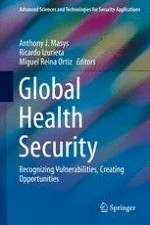2020 | OriginalPaper | Buchkapitel
Simulation and Modeling Applications in Global Health Security
verfasst von : Arthur J. French
Erschienen in: Global Health Security
Verlag: Springer International Publishing
Aktivieren Sie unsere intelligente Suche, um passende Fachinhalte oder Patente zu finden.
Wählen Sie Textabschnitte aus um mit Künstlicher Intelligenz passenden Patente zu finden. powered by
Markieren Sie Textabschnitte, um KI-gestützt weitere passende Inhalte zu finden. powered by
